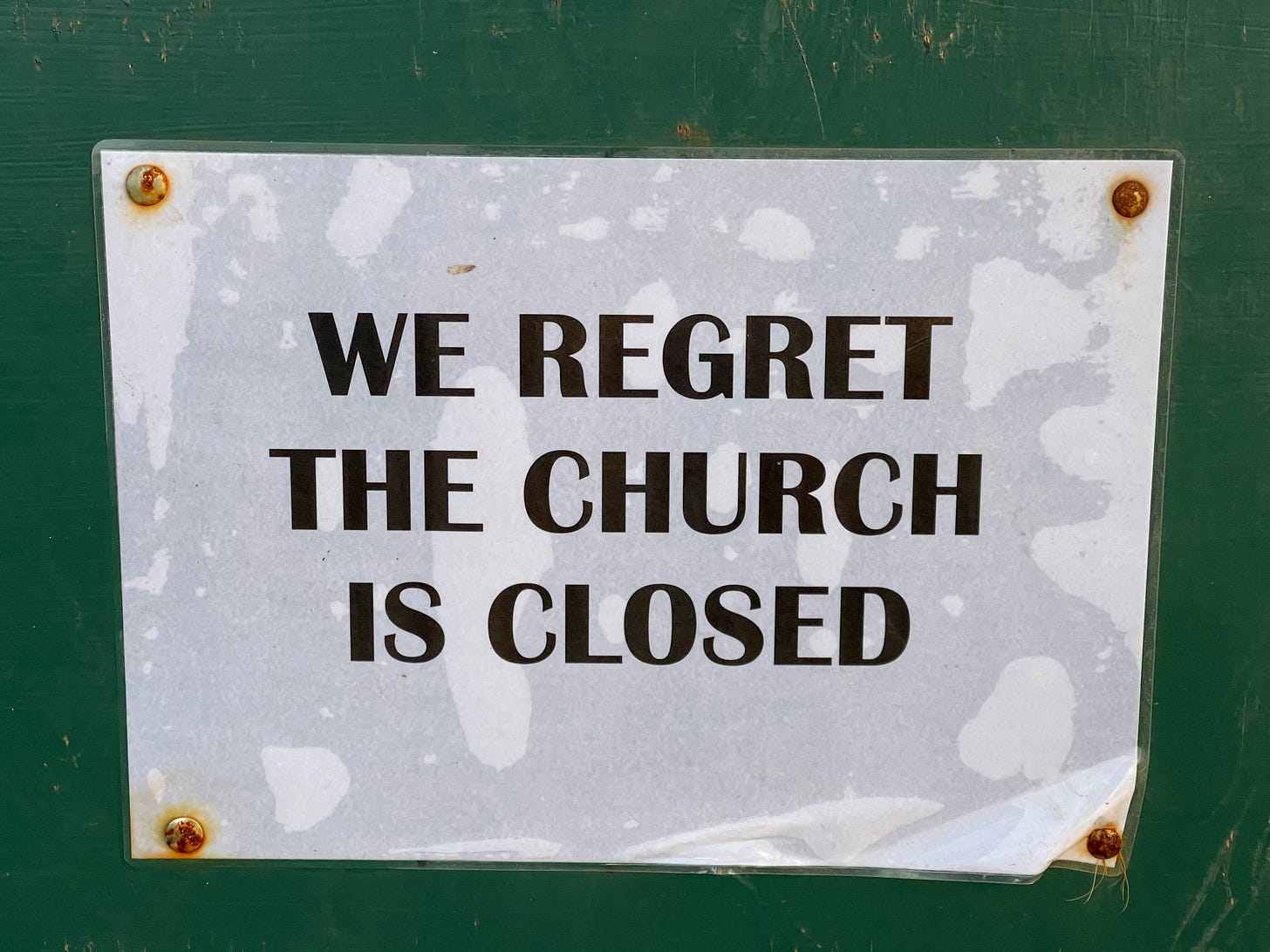Mayfly Meanderings on the Book—The American Religious Landscape: Part Three
Topics: Mainline Protestant Trends. High Expectations vs. Low Expectations.

The American Religious Landscape—Part Three on Meanderings Six and Seven
This is the third of a new series entitled Mayfly Meanderings. It refers to reflections on books, manuscripts, presentations, research, articles and other information and knowledge which I find interesting. I hope these lead to greater wisdom for you and me both.
Read Part One HERE on more than survey research and the limits of survey research.
Read Part Two HERE on decline of Christianity, rise of non-denominationalism, and evangelical trends
Book: Ryan P. Burge. The American Religious Landscape: Facts, Trends, and the Future. New York: Oxford University Press, 2025. See this book HERE.
MM Six—Mainline Protestant Trends: On page 255, Ryan makes two statements that should make mainline Protestants stand up and take notice. First, “Mainline Protestant Christianity will largely disappear.” Second, “By 2030, just 5% of all Americans will be mainline Protestant, and this number will reach zero somewhere around 2040.”
Zero? Really? Endowments will sustain mainline Protestant congregations for decades beyond that. However, many—perhaps most, though I do not have a count—might become defined more by the term museum than by the term mainline by 2040.
What is happening to mainline Protestants is already a dramatic ensmallment campaign. “52% of all Americans aligned with a mainline denomination in 1958.” [52]
My observation is that mainline Protestants lost their understanding of evangelism. If asked to define it, they would say that evangelism, new member recruitment, and new member assimilation are the same thing. When they make this decision, they move to assimilation as the only remaining growth focus they seriously consider.
I used an exercise during my consulting days with congregations where I asked congregational leaders to define evangelism, new member recruitment, and member assimilation as distinct from one another. Many lay leaders in mainline Protestant congregations could not see the difference.
My wife and I attend a mainline Protestant congregation for worship twice a month. We do this to worship with our daughter’s family and because we need a “fix” of more liturgical worship than our Baptist congregation offers.
We sit with them in the back row so our four-year-old grandson does not distract worshippers and can quietly play with the toys he brings for when the worship service exceeds his attention span.
We walk by the greeters and say a brief “Thank you” to them as they say welcome. We receive a worship folder and announcement sheet from the ushers, who are stationed right behind where we sit.
We give an offering every time we attend. We participate in Communion by going forward to kneel and receive the elements at the front of the sanctuary. We greet a minister as we leave as one is stationed at each exit door.
During the announcements segment of the worship, we are encouraged to complete a guest card. But we do not. Neither do we inquire with one of the ministers or church staff about participation in the congregation.
No one knows us there. Well, that is not exactly true. One of the staff ministers was in the church preschool where my wife was the director in another city about 30 years ago. We connected with her as we left one Sunday when my wife recognized her name after all these years.
Everything is pleasant and positive. But truly—to this congregation—who are we and why are we attending? Do we need to be the focus of evangelism, become members, or assimilate into the congregation? Or perhaps we are long-term but casual members.
No one in this congregation knows. Growth for them may be a hope, but it is not a strategy.
MM Seven—High Expectations vs. Low Expectations: The 1972 book by Dean Kelley entitled “ Why Conservative Churches are Growing “ keeps coming to mind as I read and ponder Ryan’s book. It came out during my first year in seminary, where I studied the sociology of religion—among other subjects.
In considering the meaning behind the research on which this book is based, I concluded the real issue was not always conservativism but is often expectations.
Congregations with high expectations, feeling called to engage people in a spiritual and strategic lifelong proactive journey of faith development, could potentially experience growth. Conversely, congregations with low expectations faced significantly greater challenges in achieving growth.
Ryan points out many faith traditions that have expectations and reliable practices for faith development beyond merely connecting with, attending, and identifying with a specific faith. When these expectations and actual practices by members are realized, it is more likely that qualitative growth in people's faith journeys will occur, and more individuals may be drawn to that faith group.
Furthermore, more individuals affiliated with that faith group actively encourage others—by engaging in evangelism activities—to embrace an active faith.
Another book comes to mind. This is Church & Denominational Growth: What Does (and Does Not) Cause Growth or Decline, a 1993 book edited by David Roozen and Kirk Hadaway. (Kirk, I have known since 1981 when he was a researcher for Southern Baptists.)
From reading the book and engaging in dialogue with various people, I came away with an understanding that congregations and denominational families that clearly understood what evangelism means within their faith tradition, and proactively engaged in it, tended to grow.
This is another illustration of the high expectation versus low expectation concept. If you expect something transformational to happen to people spiritually, then you have high expectations. If you do not, or do not proactively pursue this among attendees, you have low expectations.
How high or low are your expectations?
Next: MM Eight on Black Baptists and the Miscount. MM Nine on Jewish Disappearance.
OR . . .

